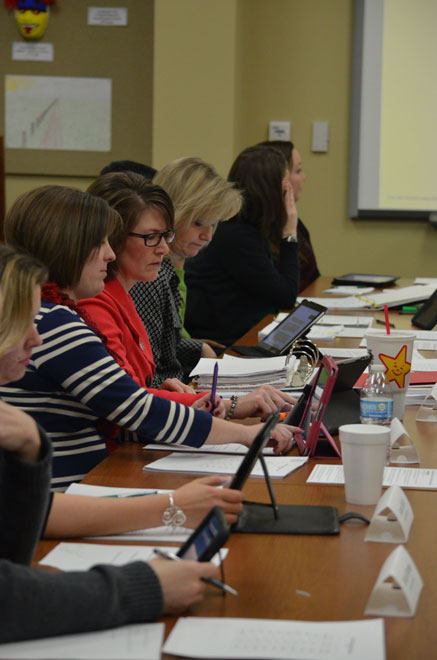
“Since money comes from different funding sources, the school district is making very high level projections about the funding sources and what we can expect for next year’s budget,” Dr. Jennifer Mast, RBHS Principal, said. “What happened when the assessed valuation was released is the county said, ‘Here’s what we’re going to bring in with property taxes this year, here’s how much of that is going to the school district’ … for the piece of Columbia Public School’s income that comes from the County of Boone from property taxes [make up] a big chunk.”
In conjunction with the shortfall of anticipated funds lowering income for the next fiscal year, deficit spending has been written into the budget for the 2014-2015 school year. That is not to say, however, that the district is in financial trouble. The district has sufficient enough budget reserves this year, that they can comfortably deficit spend next year, according to Mast.
“Our goal as a healthy district is to have 17 percent of our total budget in reserves, our district right now is at 23 to 24 percent, which is very healthy,” Mast said. “We have to be careful of how much we deficit spend because if the income continues to be less than what it costs to run the district for several years, the projection is that in five years if nothing changes, we’ll be down to 12 percent in our reserves.”
Every school in the district staffs buildings using Full Time Equivalency, a system working around the ratio of teachers to students. With the addition of freshman students to high schools, 2013-14 is to be RBHS’s most populated year, causing FTE to be lower than the ideal amount. How many teachers the district will employ next year remains an uncertainty, because student population is only one of the deciding factors.
“The question remains: ‘Will being somewhat understaffed this year allow us to stay exactly where we are, or will we still get cut?’” Mast said. “Because the budget situation will either not allow them to staff us to the appropriate point or, because we lost more students than what our current staff should support.”
The low assessed valuation will also put certain plans of RBHS on the backburner, considering that there is additional difficulty in making improvements with less funding.
“I think the biggest disappointment for most employees is that there was some hope, not a lot, but some hope of a salary increase this year,” Mast said, “and I think that hope has diminished quite a bit. I’m not saying that its not going to happen, but it may be a stretch.”
Some teachers have gone years without salary increases, and the potential for a longer wait adds a burden on them. This makes improvement even more difficult for the school, according to English Department Chair Katie Walthall.
“A teacher’s salary has never been enough for me, or my family. I’ve always had to supplement my salary by teaching summer school, working full time throughout the summer, and working a second job. Up until this year, I had worked two jobs my entire teaching career,” Walthall said. “The fact that they are continuing to not pay teachers adequately and then increase teaching load by increasing student numbers is also just hazardous. I know a lot of teachers that it has just run out of the door. They just cannot continue to expect us to do more with less pay.”
By George Sarafianos





















































































